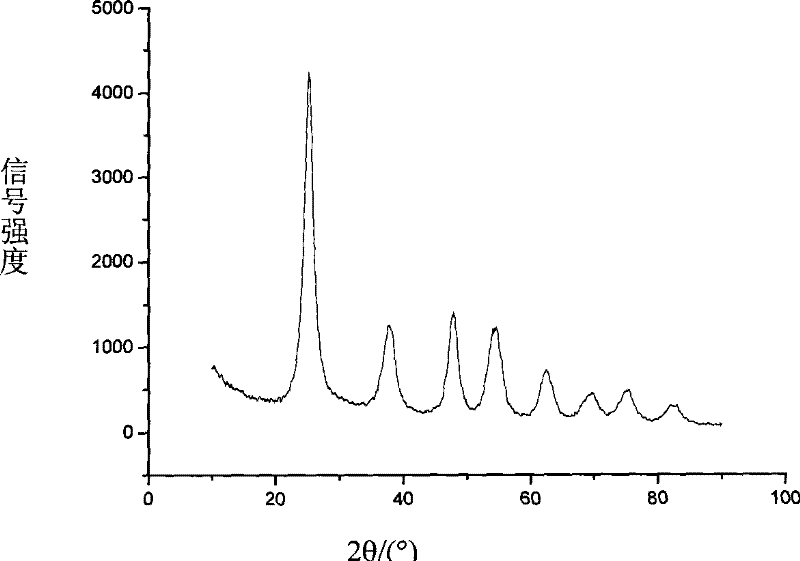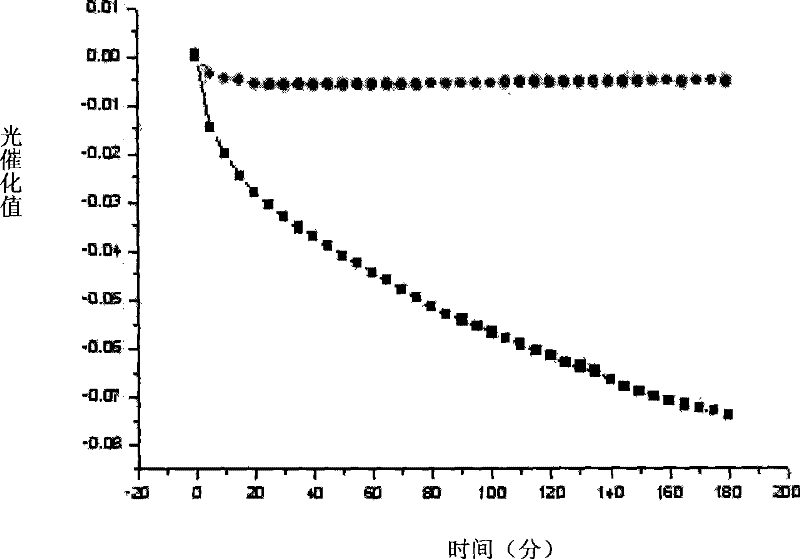Method for preparing self-cleaning toughened glass
A tempered glass, self-cleaning technology, applied in the field of functional materials, can solve the problems of unstable performance of self-cleaning glass, low photocatalytic activity, high heat treatment temperature, and achieve good photocatalytic and photo-induced hydrophilicity, high light transmittance , the effect of stable performance
- Summary
- Abstract
- Description
- Claims
- Application Information
AI Technical Summary
Problems solved by technology
Method used
Image
Examples
Embodiment 1
[0035]Remove all labels and dirt on the glass surface to ensure that the glass surface is clean, and then wash off the dust on the glass surface with water. Use a glass polishing powder of about 400 mesh (the mixing ratio of polishing powder and deionized water is 1:10) to polish the glass surface with a rotating disk, then rinse the dirt and polishing powder on the glass surface with water, and use a fan with a filter to clean the surface of the glass. Dry the moisture on the glass surface to ensure that the glass surface is clean without any dust, and then use high-purity nitrogen to purge the glass surface. Use a spray gun to evenly spray nano self-cleaning coating with a concentration of 10g / l on the glass surface (speed 1 m / s), and cure at normal temperature and pressure to obtain super-hydrophilic self-cleaning glass.
[0036] Then acid-treat the surface of the cured self-cleaning glass. The acid used is 0.5M HCl aqueous solution. The soaking time is 1 hour. After taking...
Embodiment 2
[0040] Clean the original glass sheet, dry the surface with a hair dryer, and evenly spray the self-cleaning nano-coating with a concentration of 25g / l on the glass surface (speed 2.5 m / s) with a spray gun. If there is too little cleaning coating, the film formation is not good, resulting in a significant decrease in its photocatalytic activity.
Embodiment 3
[0042] Use 400-mesh glass polishing powder to polish the glass surface with a rotating disc, then rinse the dirt and polishing powder on the glass surface with water, dry it naturally in a clean place, and spray the self-cleaning nano-coating with a concentration of 20g / l evenly with a spray gun Superhydrophilic self-cleaning glass can be obtained by curing at normal temperature and pressure on the glass surface (speed 0.9 m / s). Then acid-treat the surface of the cured self-cleaning glass. The acid used is 3M acetic acid aqueous solution. The soaking time is 2 hours. After taking it out, rinse it with tap water, rinse it with deionized water, and dry it under natural conditions. Then the prepared self-cleaning glass was tempered at 700°C for 550 seconds. The treated self-cleaning glass maintained good superhydrophilic properties and photocatalytic properties, but due to the slow spraying speed, the light transmittance of the glass surface was significantly reduced. However, th...
PUM
| Property | Measurement | Unit |
|---|---|---|
| particle diameter | aaaaa | aaaaa |
Abstract
Description
Claims
Application Information
 Login to View More
Login to View More - R&D
- Intellectual Property
- Life Sciences
- Materials
- Tech Scout
- Unparalleled Data Quality
- Higher Quality Content
- 60% Fewer Hallucinations
Browse by: Latest US Patents, China's latest patents, Technical Efficacy Thesaurus, Application Domain, Technology Topic, Popular Technical Reports.
© 2025 PatSnap. All rights reserved.Legal|Privacy policy|Modern Slavery Act Transparency Statement|Sitemap|About US| Contact US: help@patsnap.com


